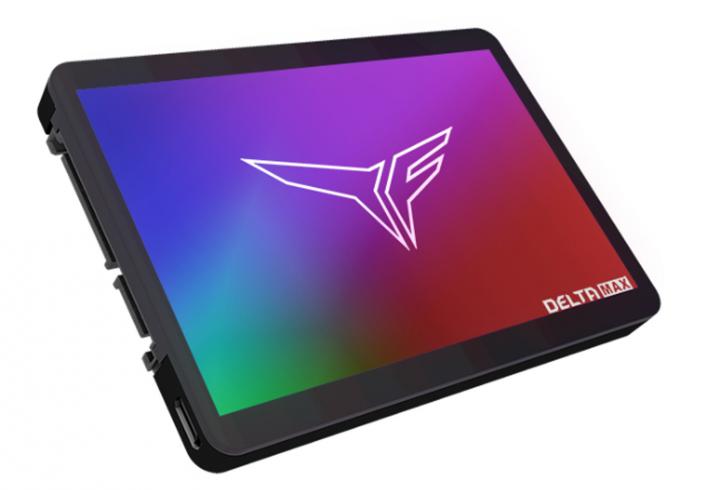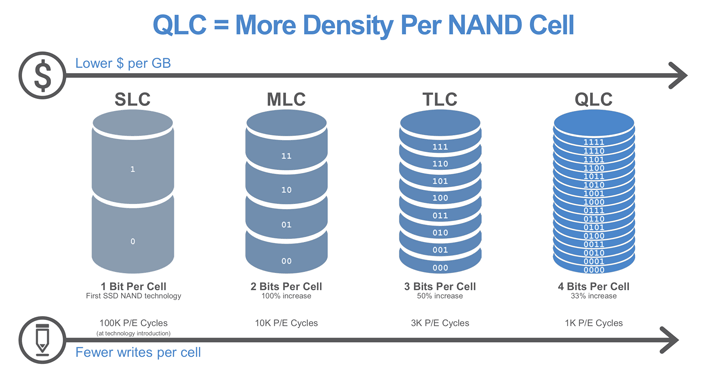What's SATA | NAND Types
SATA (including SATA 3/6Gbps) Explained
SATA I (revision 1.x), formally known as SATA 1.5Gb/s, is the first generation of the SATA interface, running at 1.5 Gb/s, and it supports a bandwidth throughput of up to 150MB/s. SATA II (revision 2.x), formally known as SATA 3Gb/s, is the second generation of the SATA interface, running at 3.0 Gb/s, and it supports a bandwidth throughput of up to 300MB/s.
SATA III (revision 3.x), formally known as SATA 6Gb/s, is the third generation of the SATA interface, running at 6.0 Gb/s. It supports a bandwidth throughput of up to 600MB/s and is backward compatible with the SATA 3 Gb/s interface.
What Is NAND?
NAND flash memory is a type of non-volatile storage technology that does not require power to retain data. An important goal of NAND flash development has been to reduce the cost per bit and to increase maximum chip capacity so that flash memory can compete with magnetic storage devices, such as hard disks. NAND flash has found a market in devices to which large files are frequently uploaded and replaced. MP3 players, digital cameras, and USB flash drives use NAND technology.
NAND Types
SLC
Single-level cell NAND stores a single bit per cell, and it offers the highest endurance of the three types. In return, it takes up more die space per capacity, which restricts the possible capacity options and increases the price. SLC is pretty much limited to the enterprise area, where endurance is the most vital feature needed.
MLC
Multi-level cell NAND stores multiple bits per cell, but that name can be a bit misleading. While technically it could go beyond 2 bits per cell, it typically equates to just 2 bits per cell. It has a lower endurance than SLC, but better than TLC. This is what you will find in most enthusiast drives, where it delivers a great read and write performance.
TLC
Triple-level cell NAND is the latest addition to the range, and it also stores multiple bits per cell, three to be exact. TLC has the lowest endurance of the three types, but it also offers the largest capacities for the smallest prices. Manufacturers have improved the endurance and reliability of TLC NAND a lot through a refined manufacturing processes, error correction codes, and wear-leveling algorithms.
QLC - QLC NAND writes 4 bits per cell. QLC has a 33% higher storage density than TLC, and each of its cells can save 4-bit data. Besides, the write cycle of QLC could reach 1000 times, which is equal to, even better than TLC. At the same time QLC costs less than TLC. The life span of QLC is as good as that of SLC or MLC, and nearly equal to TLC. As for the performance - when the cache/buffer is full it decreases rapidly in QLC, sometimes being even slower than the HDDs.
V-NAND or 3D V-NAND is the latest technology in the flash memory world. This is where planar NAND (single planes of NAND cells) are stacked vertically, and that is where the ‘V’ in V-NAND comes from. Due to the change in the vertical arrangement of the cells, these SSDs offer higher capacities with a lower production cost, and also have half the power requirement, twice the speed, and ten times the longevity of planar NAND.



